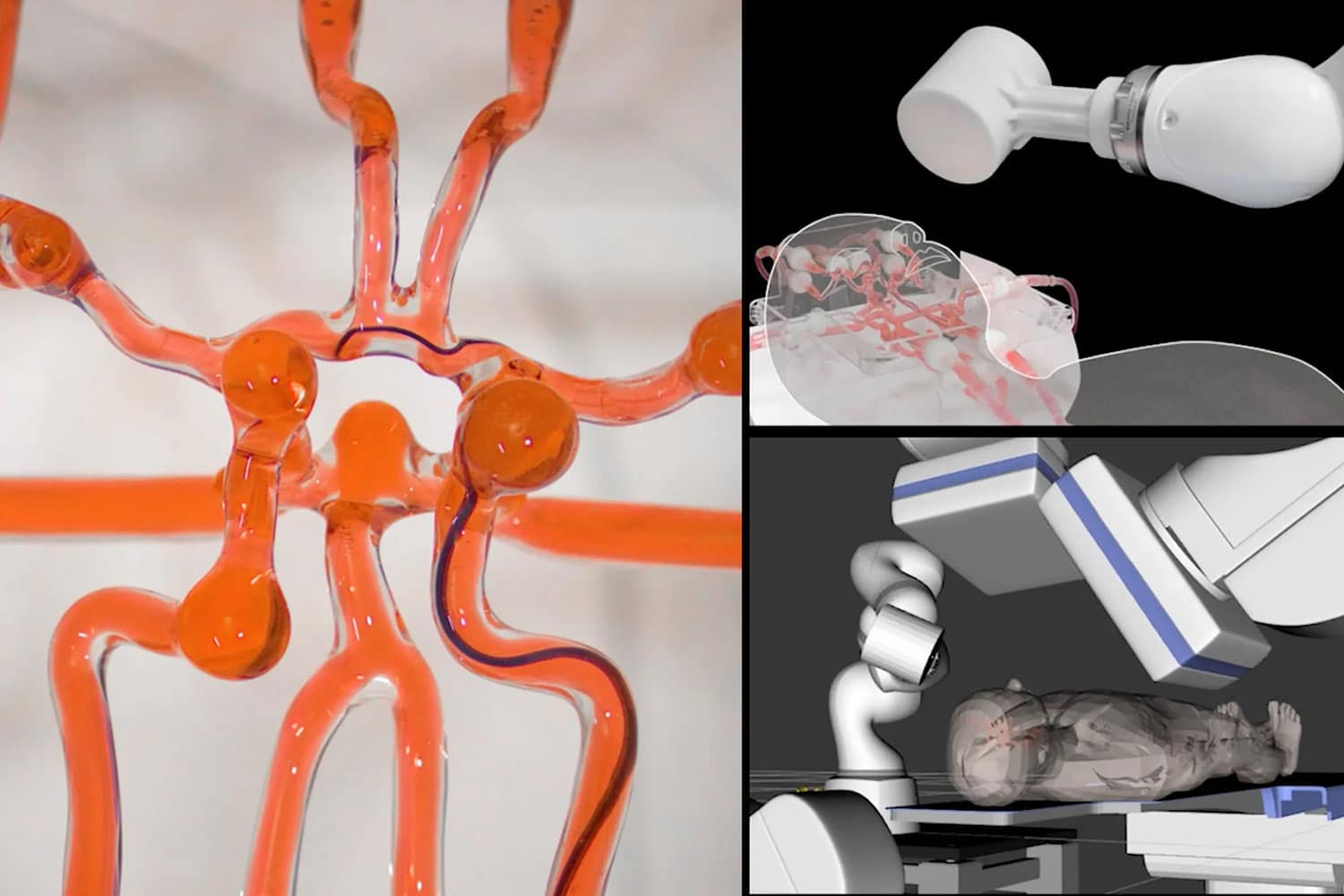
Robotic surgery is finally taking shape in healthcare. Advances in robotics technology have been adapted in various subspecialties of both open and minimally invasive surgery, offering benefits such as enhanced surgical precision and accuracy with reduced fatigue of the surgeon.
MIT engineers have developed a telerobotic system to help surgeons quickly and remotely treat patients experiencing a stroke or aneurysm. With a joystick, surgeons in a hospital can control a robotic arm at another location to safely operate during a critical window of time that could save the patient’s life and preserve their brain function.
The new system consists of a medical-grade robotic arm with a magnet attached to its wrist and sits beside the patient’s head as they lie on an operating table at their local hospital. There’s also a set of motorized linear drives to advance or retract the guidewire and a microcatheter and a remote-control console to operate the system under real-time fluoroscopy.
With a small joystick knob on a mouse and live imaging, an operator can adjust the magnet’s orientation and manipulate the arm to guide a soft and thin magnetic wire through arteries and vessels. Buttons on the mouse control a set of motorized linear drives, which advance and retract the wire to make it move forward and back. The wire is as thin and flexible as a conventional neurovascular guidewire, with a soft, magnetically responsive tip that follows and bends in the direction of a magnetic field.
The team tested the surgical robot in MGH’s Catheter Lab with a life-sized silicone model of blood vessels. The team trained a group of neurosurgeons to use the robotic system. After just one hour of training, each surgeon was able to successfully operate the system to guide the wire through complex vessels that are difficult to navigate with a manual guidewire.
“We imagine, instead of transporting a patient from a rural area to a large city, they could go to a local hospital where nurses could set up this system. A neurosurgeon at a major medical center could watch live imaging of the patient and use the robot to operate in that golden hour. That’s our future dream,” says Xuanhe Zhao, a professor of mechanical engineering and of civil and environmental engineering at MIT.
Engineers hope that the teleoperated system can help more patients receive time-critical treatment. They also see benefits for surgeons, who typically perform such vascular procedures in the same room as the patient while being exposed to radiation from X-ray imaging.
MIT’s surgical robot could help surgeons treat strokes remotely
Source: Global Access News

No comments:
Post a Comment